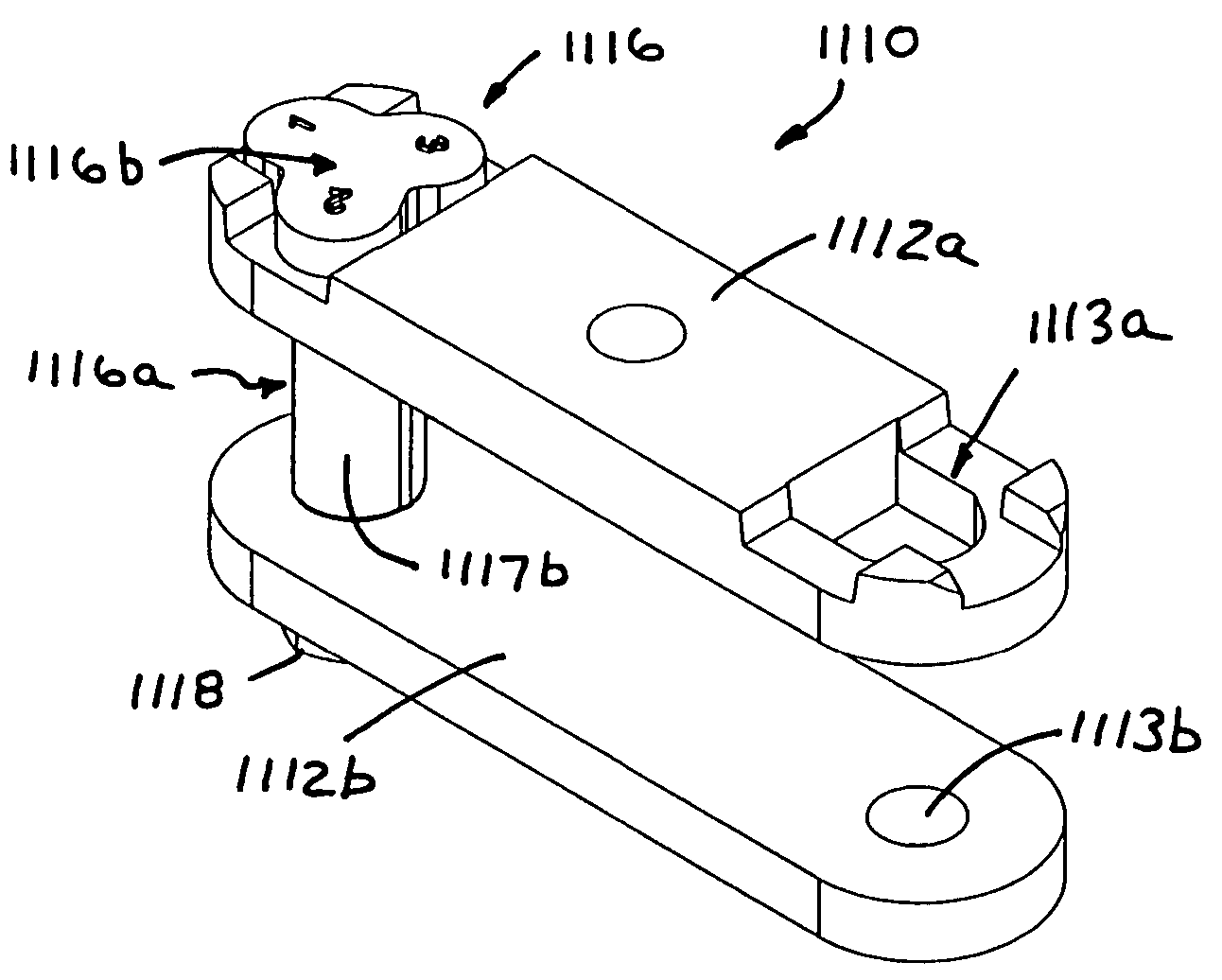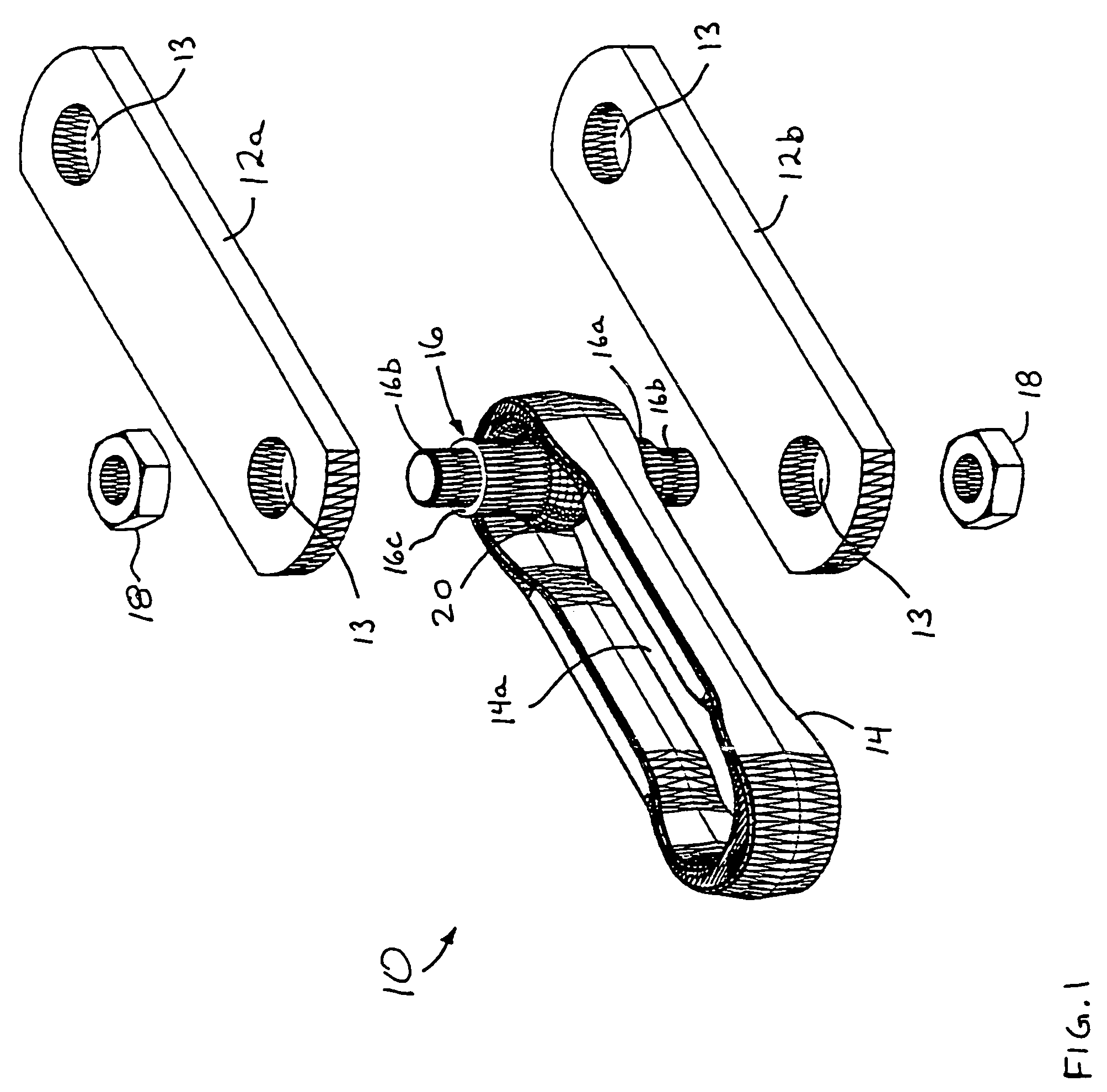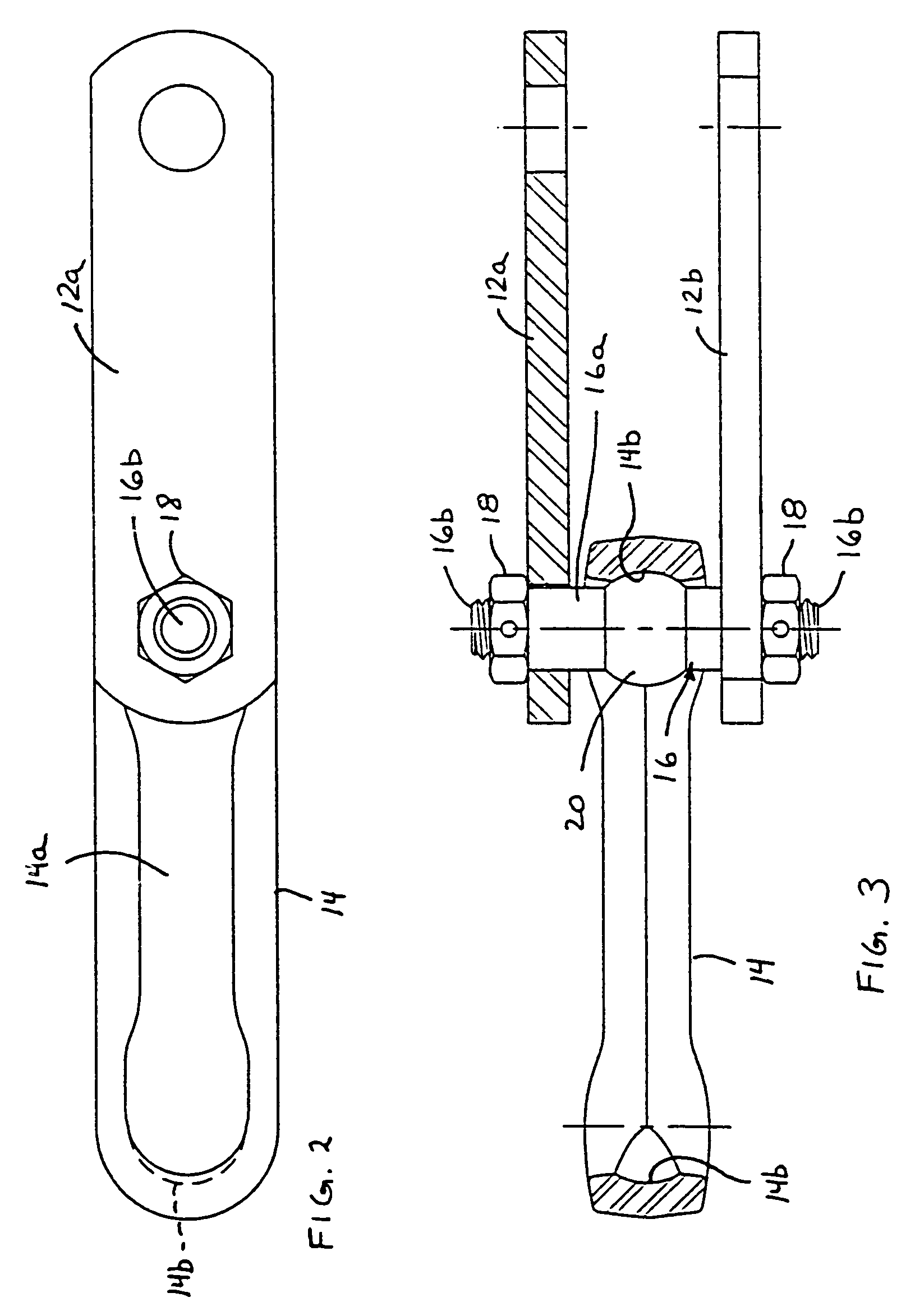Conveyor chain
a conveying system and chain technology, applied in the direction of driving chains, chain elements, packaging, etc., can solve the problems of wear on the components, failure of the link and/or the pin or bolt, and wear may increase if the friction between the pin and the link increases, so as to reduce or control the wear on the chain, enhance the flexibility of the chain link, and enhance the relative movement
- Summary
- Abstract
- Description
- Claims
- Application Information
AI Technical Summary
Benefits of technology
Problems solved by technology
Method used
Image
Examples
Embodiment Construction
[0098]Referring now to the drawings and the illustrative embodiments depicted therein, a chain or section of chain 10 for conveying product along a conveying system, such as for material handling or processing systems or the like, includes a pair of side links 12a, 12b and a center link 14 (FIGS. 1–3). The center link 14 is retained between the side links 12a, 12b by a double ended stud or stud type pin 16, which extends through a center region 14a of center link 14 and through an opening 13 in each side link 12a, 12b and is retained therein by a corresponding fastener or nut 18. Stud 16 includes a generally spherical or toroidal-shaped ball member 20 positioned generally at a mid-point or mid-region of a shaft portion 16a of stud 16. Chain 10 includes multiple linkages connected together in a continuous loop about a conveying system, as is known in the art. For ease of description, only one section or set of linkages of the chain is shown and described herein, with the other linkag...
PUM
 Login to View More
Login to View More Abstract
Description
Claims
Application Information
 Login to View More
Login to View More - R&D
- Intellectual Property
- Life Sciences
- Materials
- Tech Scout
- Unparalleled Data Quality
- Higher Quality Content
- 60% Fewer Hallucinations
Browse by: Latest US Patents, China's latest patents, Technical Efficacy Thesaurus, Application Domain, Technology Topic, Popular Technical Reports.
© 2025 PatSnap. All rights reserved.Legal|Privacy policy|Modern Slavery Act Transparency Statement|Sitemap|About US| Contact US: help@patsnap.com



